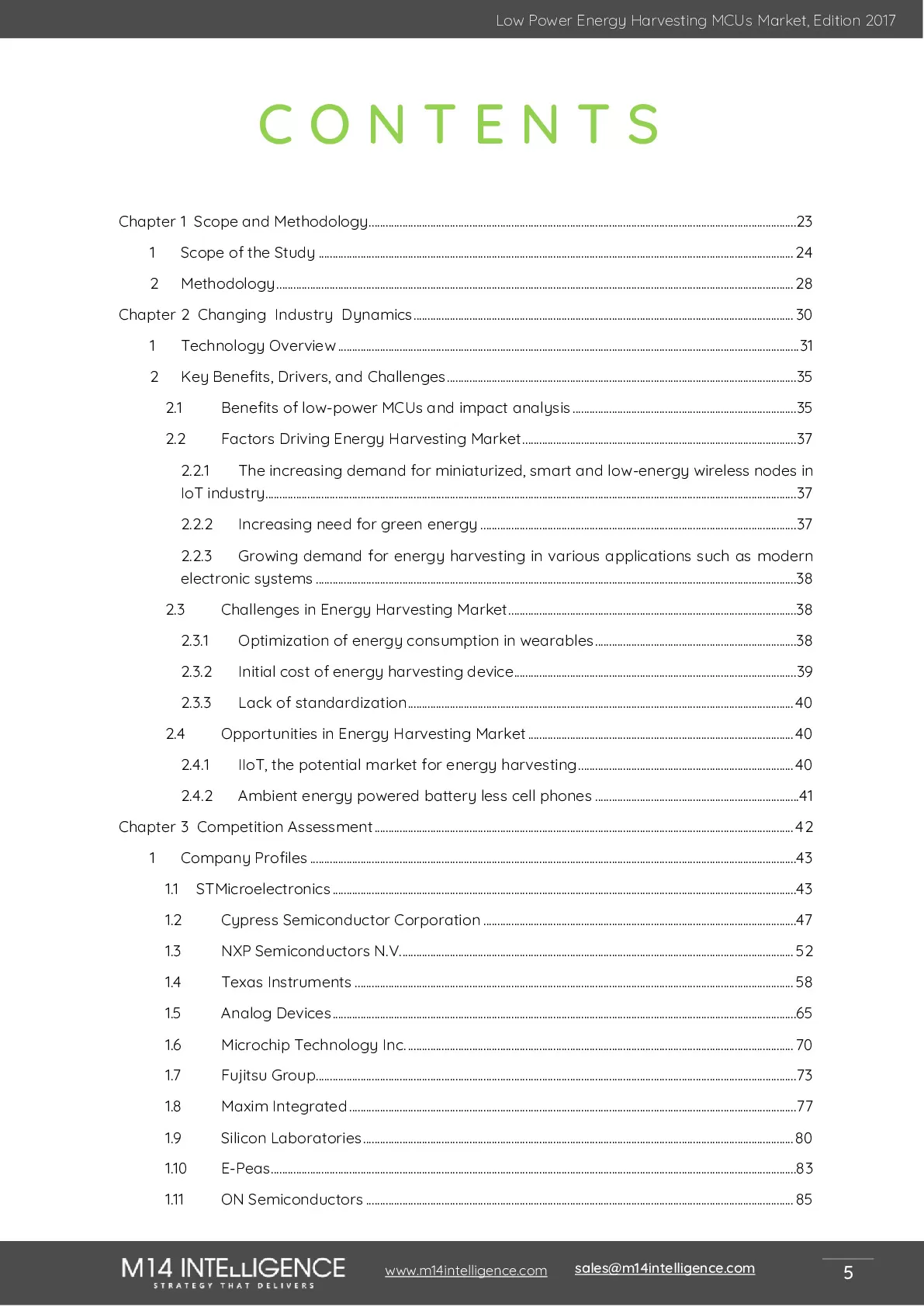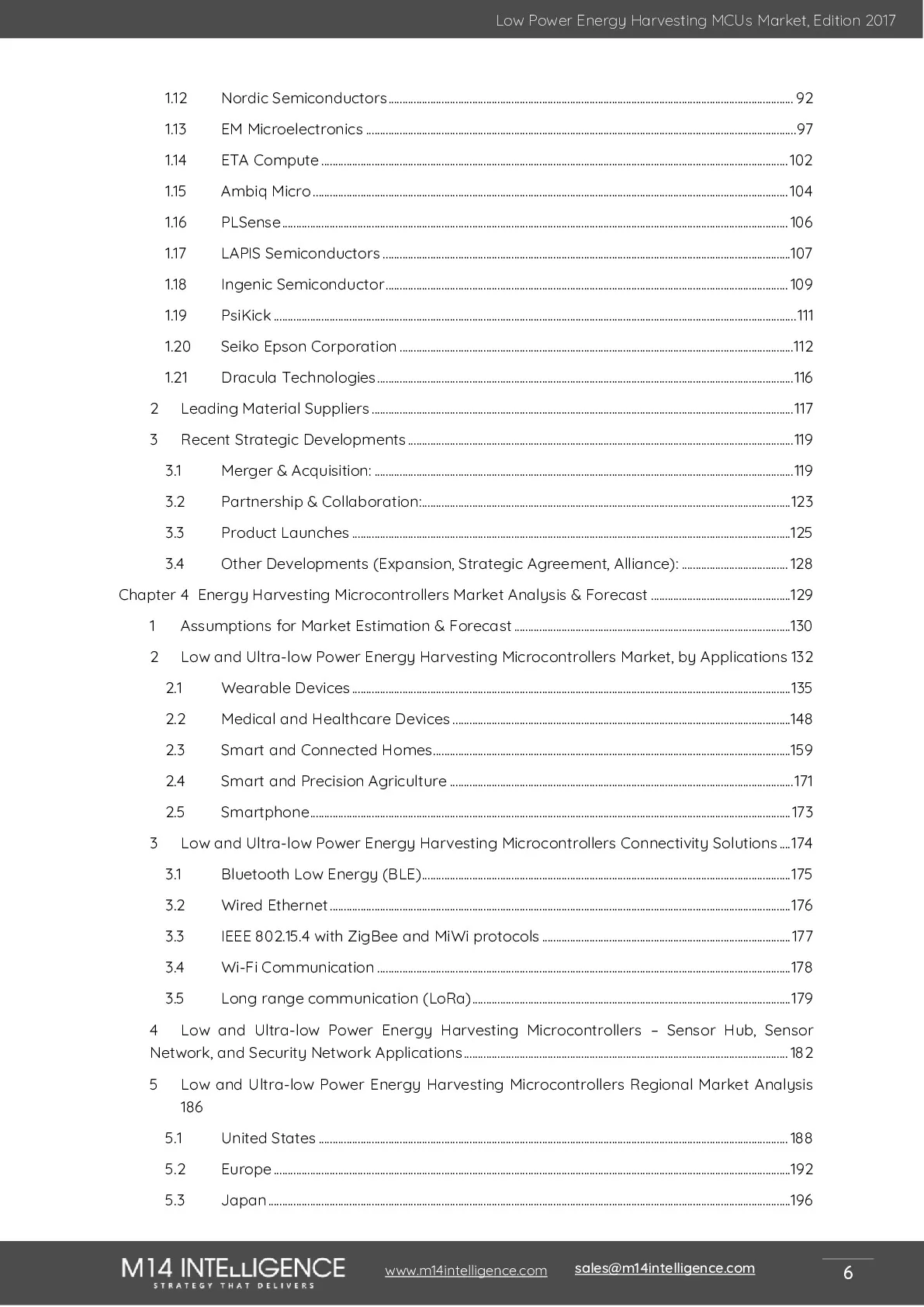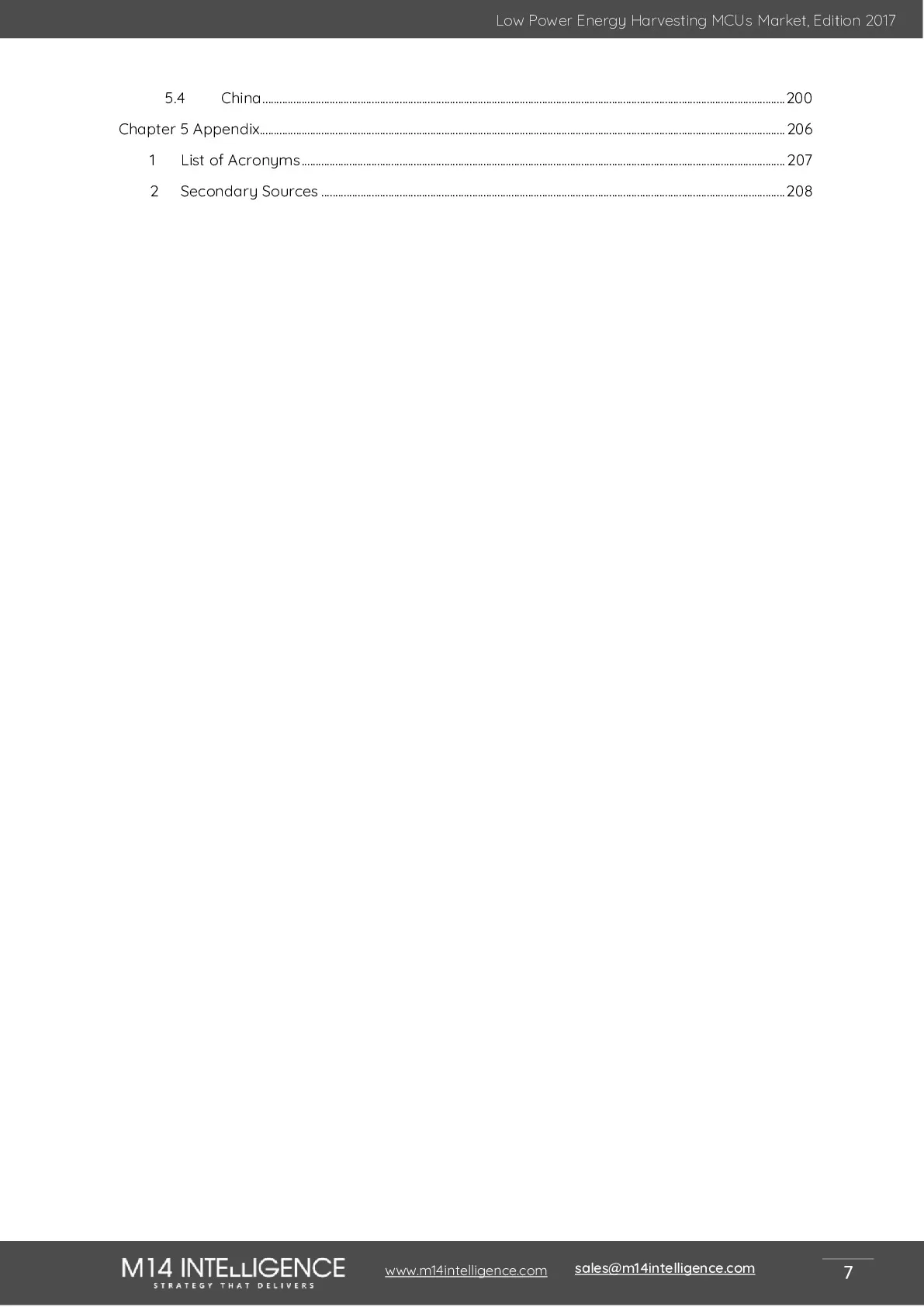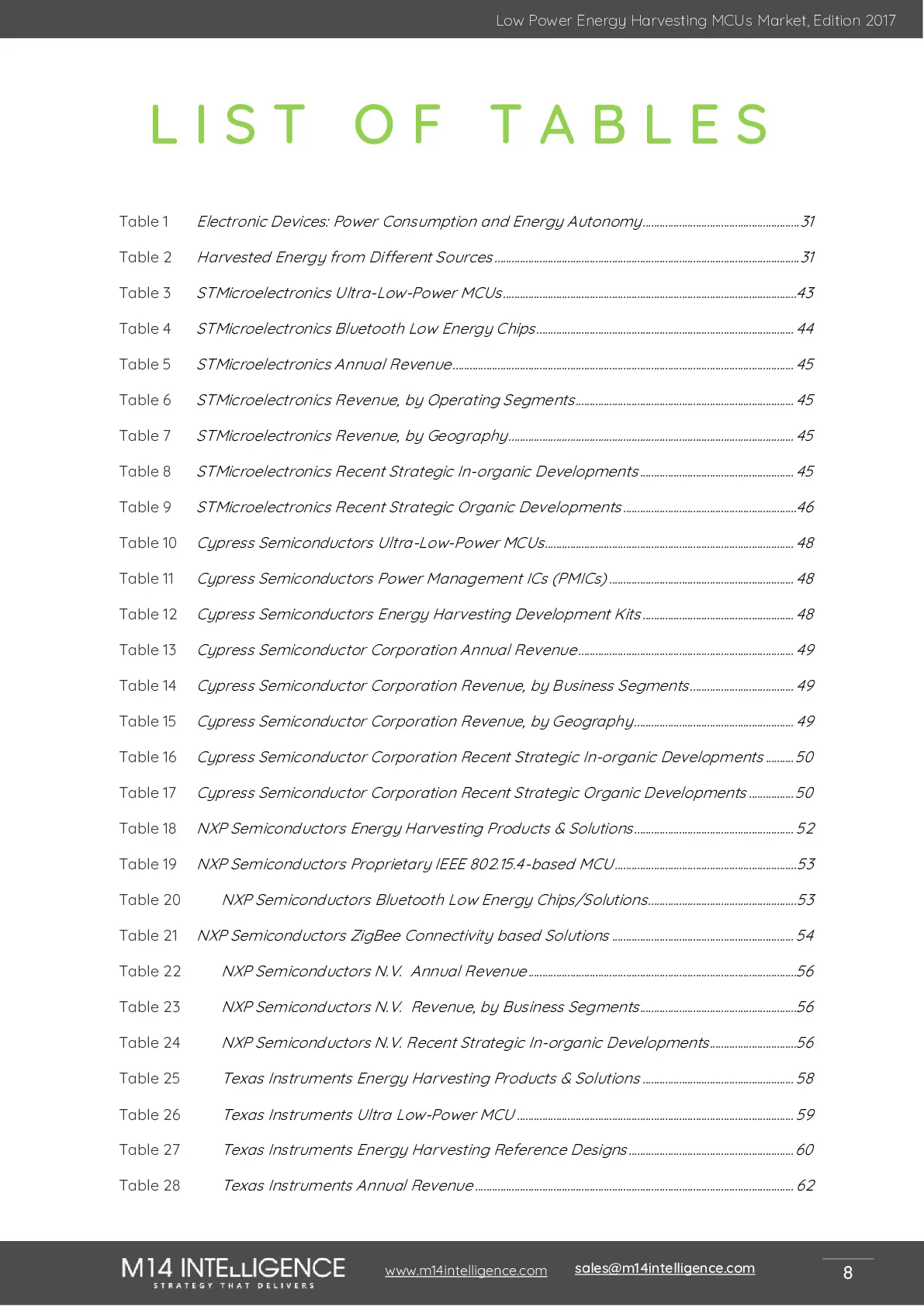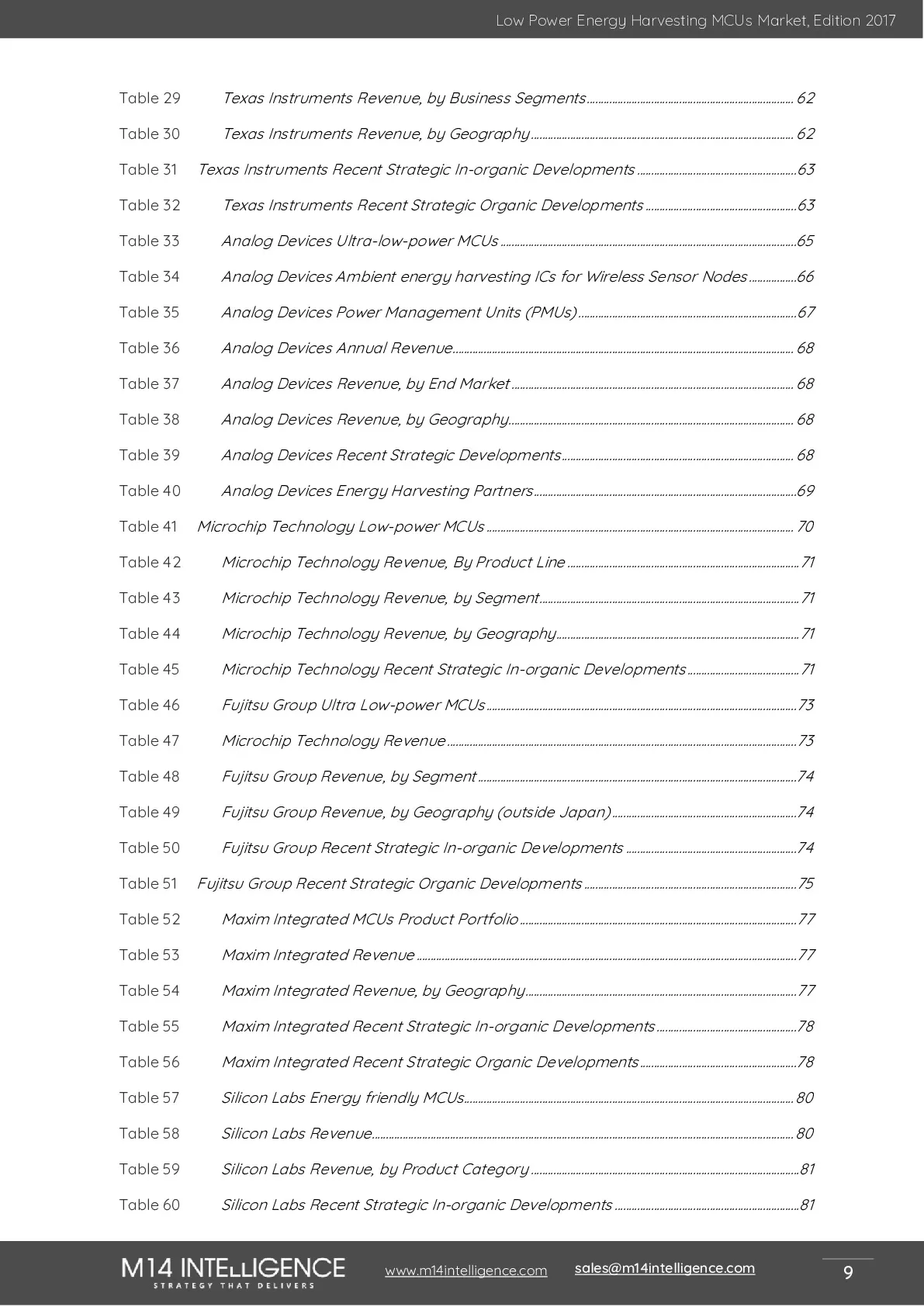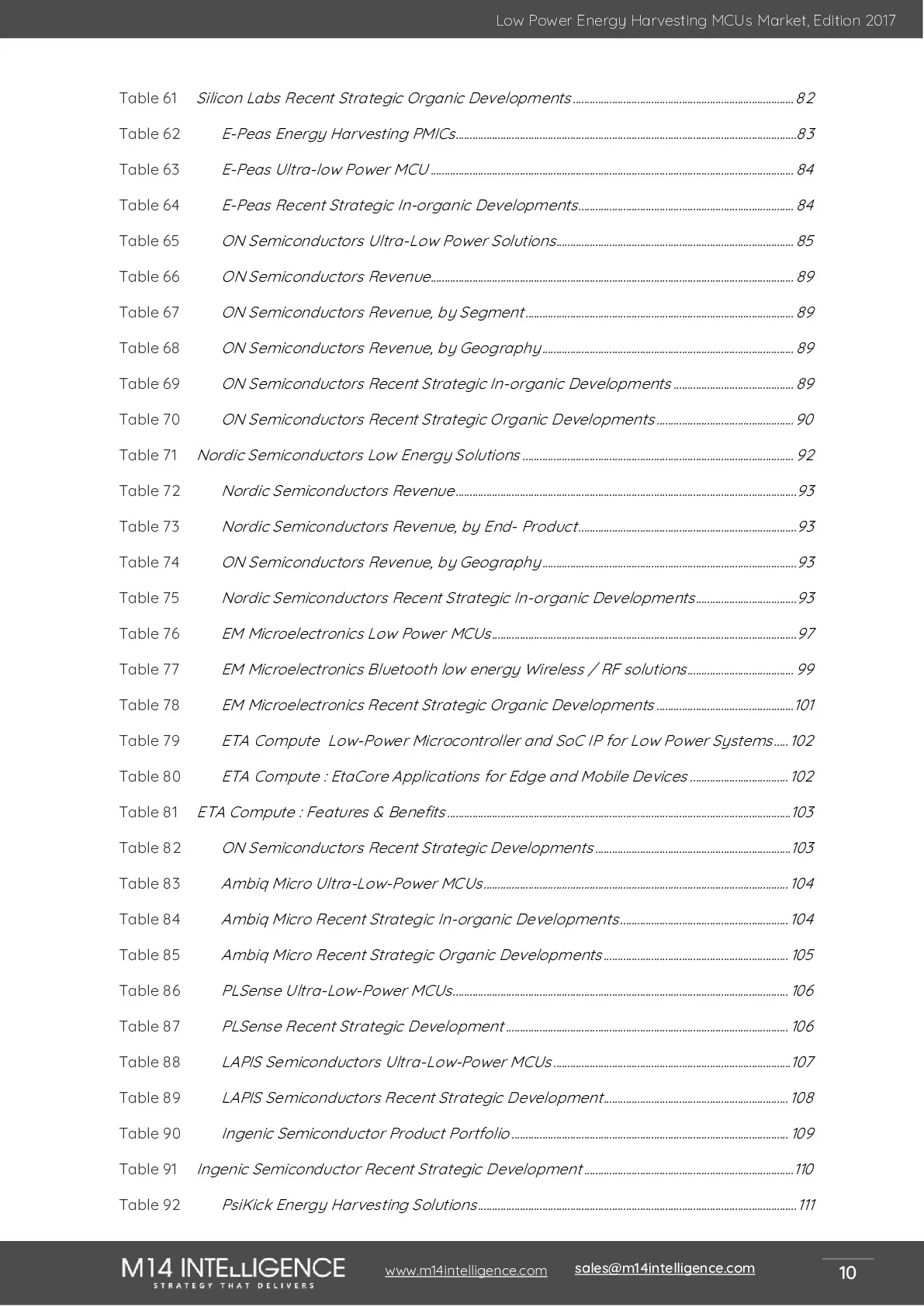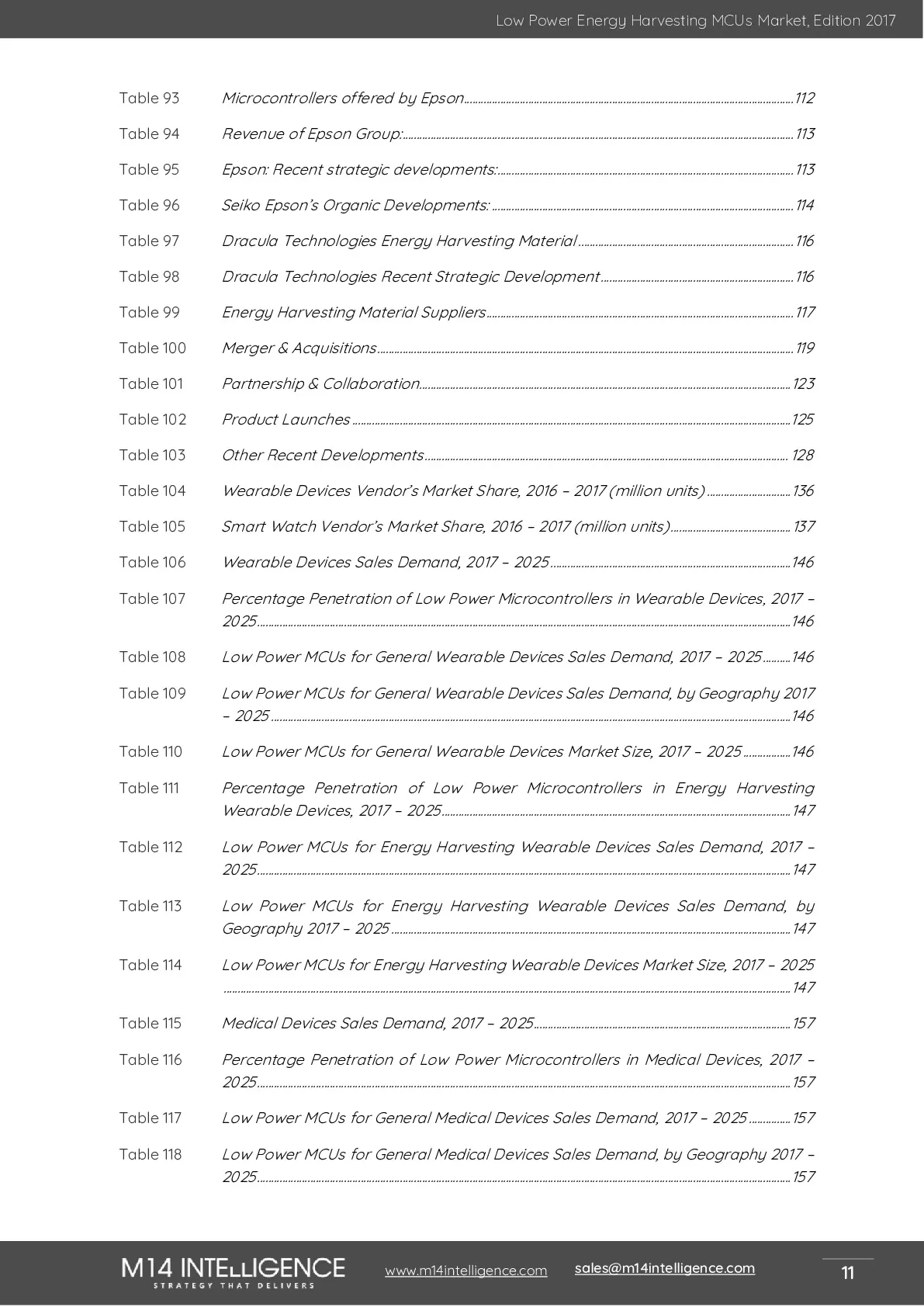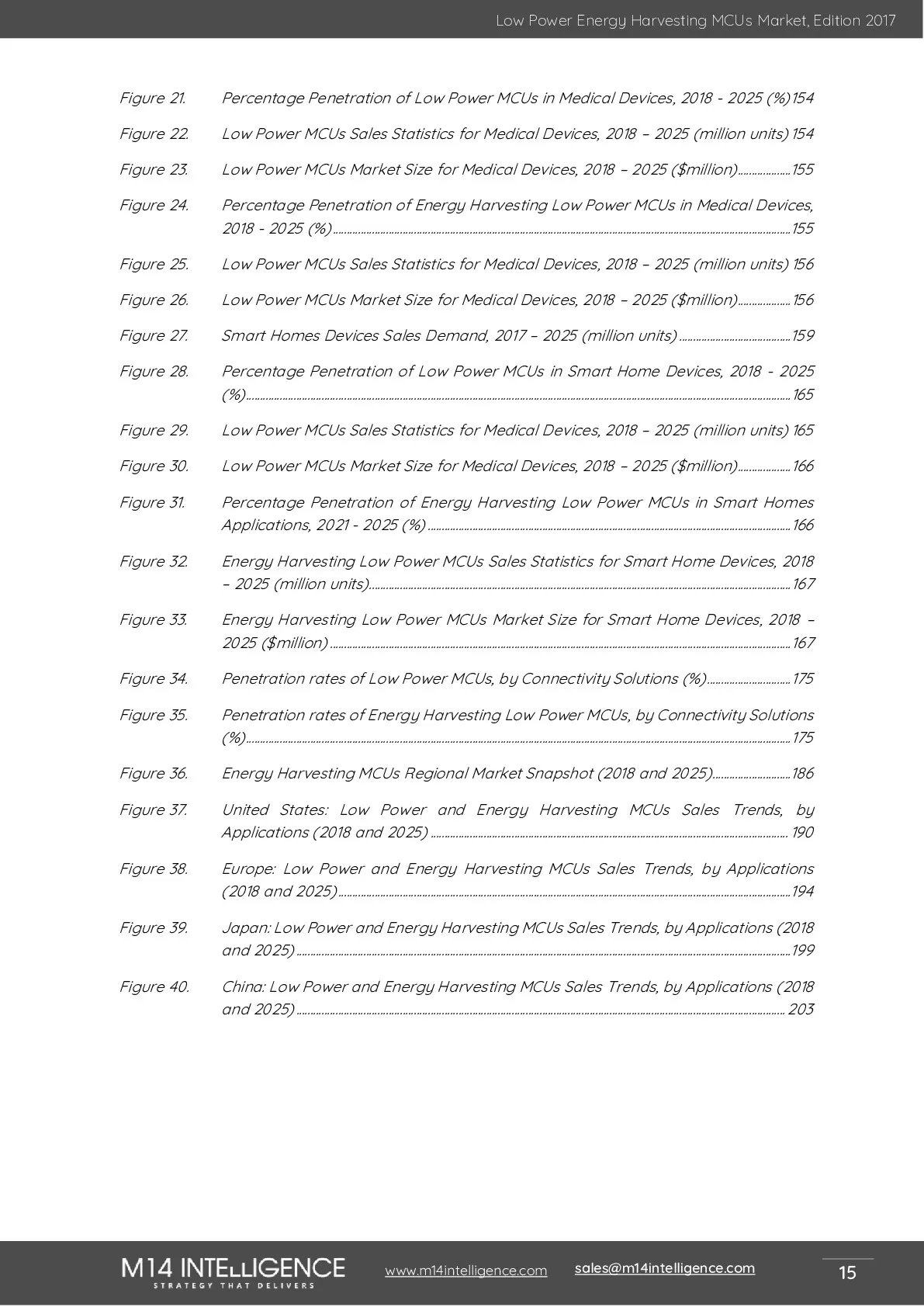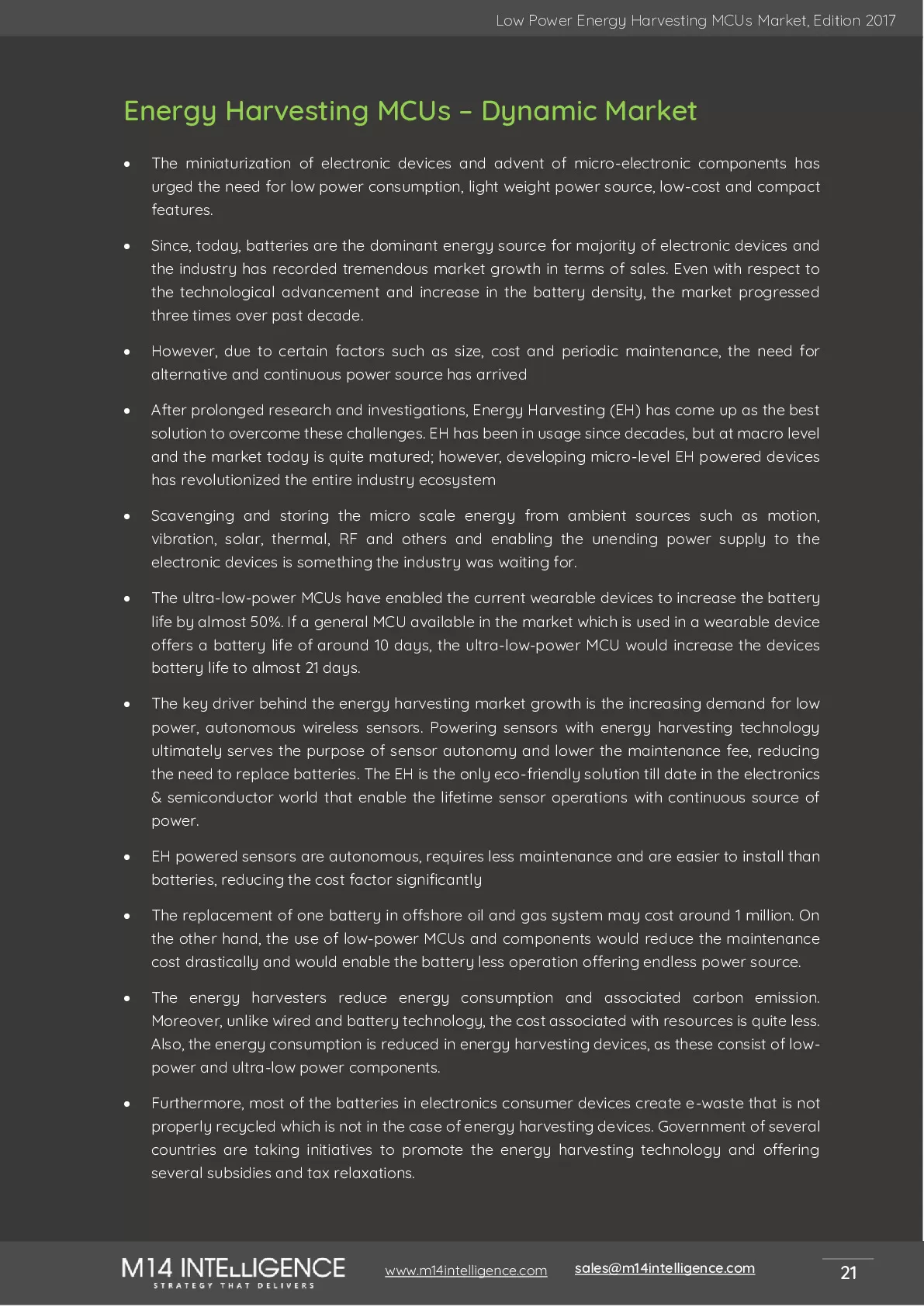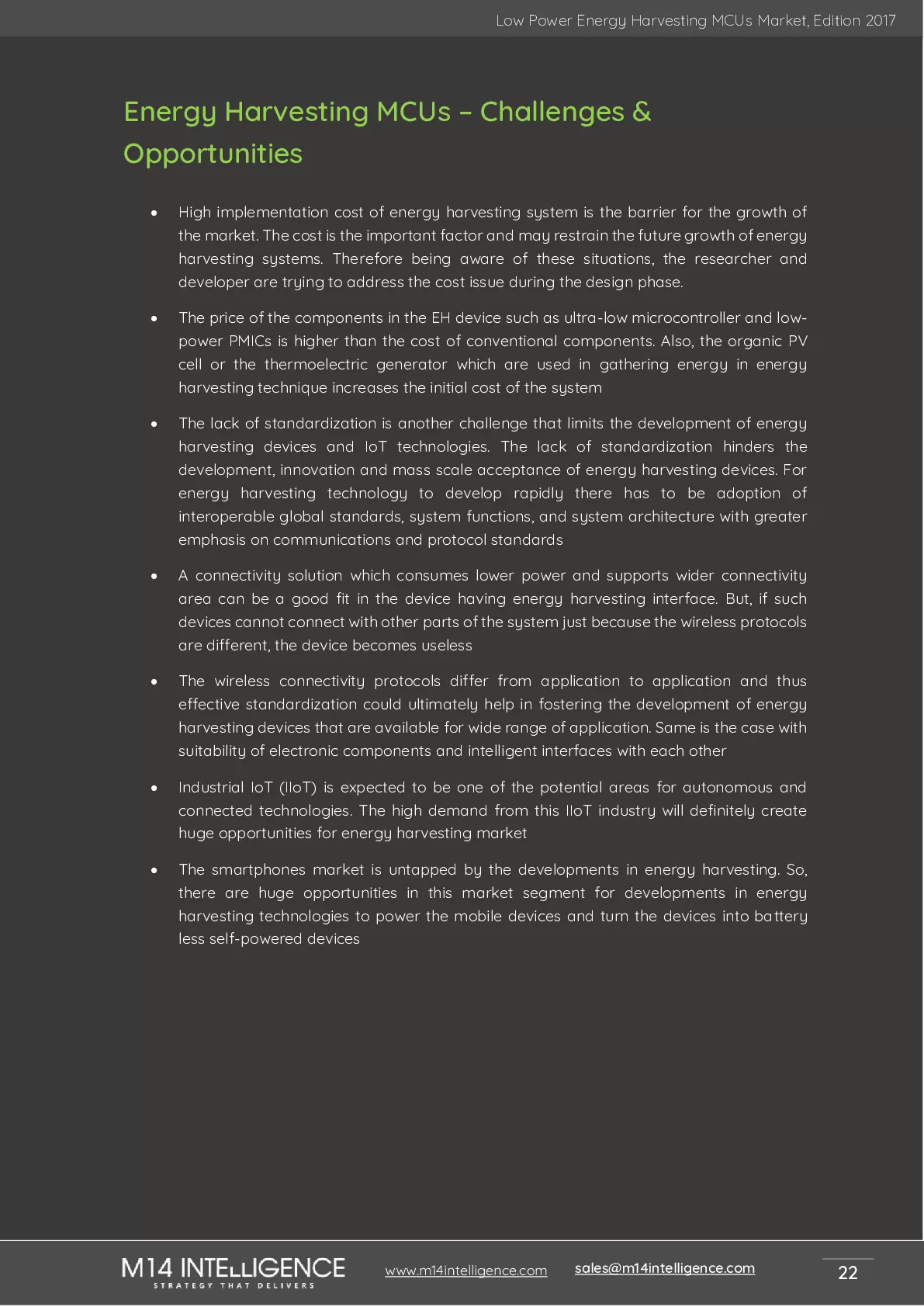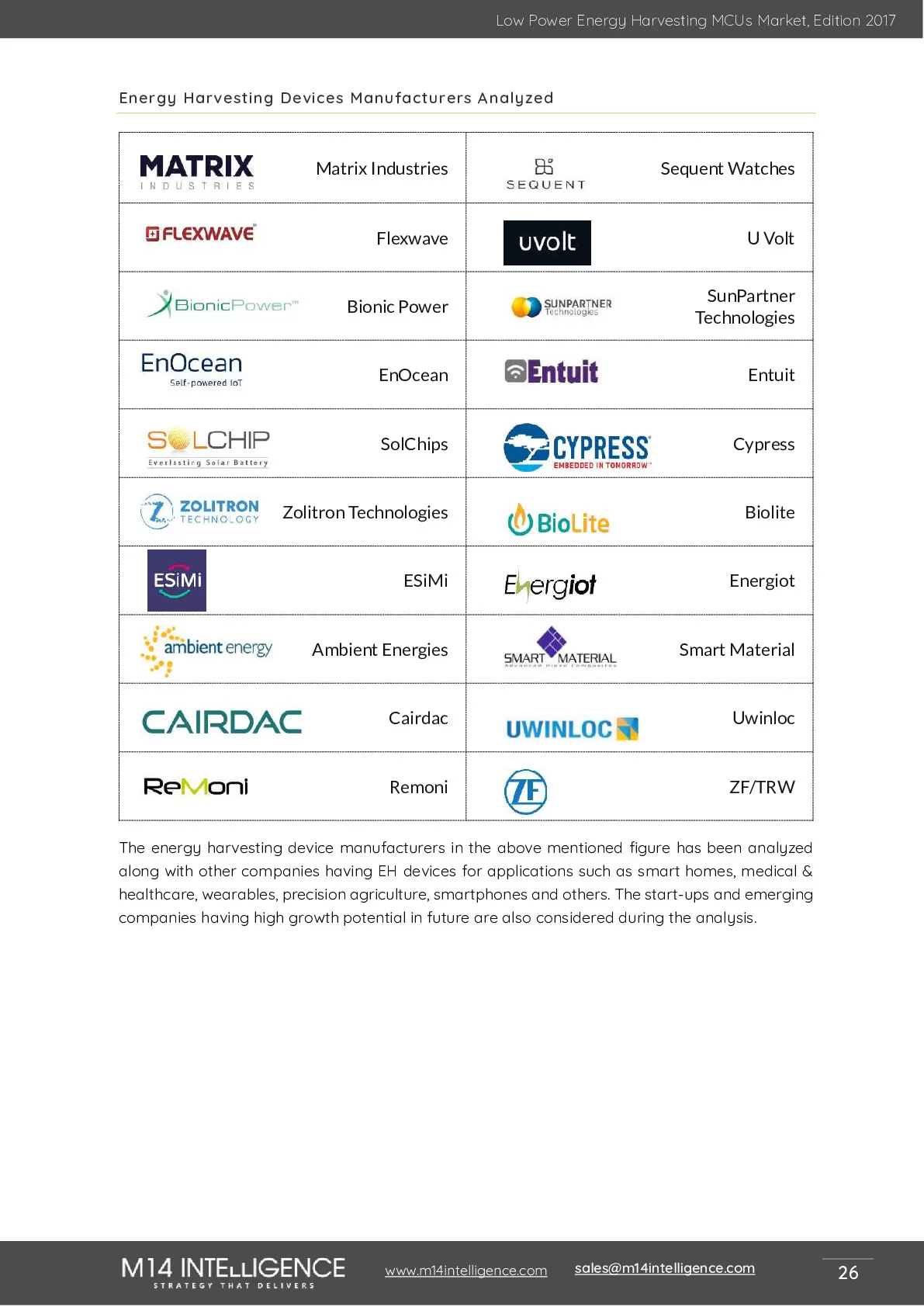Low Power Energy Harvesting Microcontrollers Market, Edition 2018
Low & ultra-low power energy harvesting microcontrollers for wearables, medical devices, connected homes, precision agriculture, & smartphones. Bluetooth Low Energy (BLE), IEEE 802.15.4 with ZigBee and MiWi protocols, & Long-range communication (LoRa)
Published: 11 Jun 2018

Key Highlights
- More than 210 pages of analysis
- 50+ players across low and ultra-low power electronics industry analyzed
- 20+ leading low power MCU suppliers profiled
- Application markets tracked across 5 major industries
- 5 major connectivity protocols analyzed
- Competition assessment and supplier’s analysis covered
- Key recent low-power electronics industry developments covered

Exhaustive Coverage
Application markets
We tried to identify and forecast potential market penetration of low and ultra-low power electronics in the above-mentioned industry with forecast on the sales, market size, and pricing of the microcontrollers.

Connectivity technologies

Regional hotspots
Industry Dynamics
Market Overview

In 2018, ~92.9 thousand units of energy harvesting MCUs are expected to be shipped for wearable devices applications in turn accounting for the total market size of $XX thousand

Sales of energy harvesting MCUs in smart watch segment will cross XX million units while for the fitness band segment is poised to cross XX million units by 2025
Key Questions Answered
- What is the current and future demand in terms of sales and market size for energy harvesting microcontrollers across China, Japan, Unites States, and Europe?
- What are the drivers, challenges, opportunities in the market and how will it impact the dynamics of the market?
- What are the major benefits of energy harvesting technology? And how will it impact the current electronics and IoT industry?
- What is the current and future demand for energy harvesting microcontrollers across different applications such as Smartphones, Wearables, Medical Devices, Smart/Connected Home Devices, Smart/Precision Agriculture and which applications has the fastest growing demand?
- How is energy harvesting MCUs impacting the applications of sensor hub, sensor network, and security networks?
- How are the communication protocols such as Wifi, ZigBee, BTLE, Wired Ethernet, and Long-range (LoRa) impacting the demand for energy harvesting microcontrollers?
- Which amongst all wireless connectivity protocols have high demand? What will be the scenario in next 5 years?
- Which connectivity have high growth potential with respect to different applications including smart homes, smart phones, wearables etc.?
- How is energy harvesting microcontrollers impacting the IoT and security networks?
- Which geographical market is having huge demand and what are the prospects of growing in the countries and regions of China, Japan, United States and Europe?
- What is the percentage penetration rate of energy harvesting technology in applications such as wearables, industrial, healthcare, smart homes, smart phones, precision agriculture across different geographies such as Europe, United States, China, and Japan?
- What is the impact of growing consumer electronics market on energy harvesting technology? Which amongst the Asian countries would have high growth potential? Which country in the world would capture highest share in the energy harvesting market?
- Who are the leading manufacturers and their market share in energy harvesting microcontrollers business?
- Which ultra-low power microcontroller manufacturer would lead the race of energy harvesting technology and who will follow?
- Who are the leading material suppliers of energy harvesting microcontrollers and which MCU manufacturers they have partnered with?
- What are the recent strategic developments adopted by the leading players in the market? And what are their future projects?
List of Companies





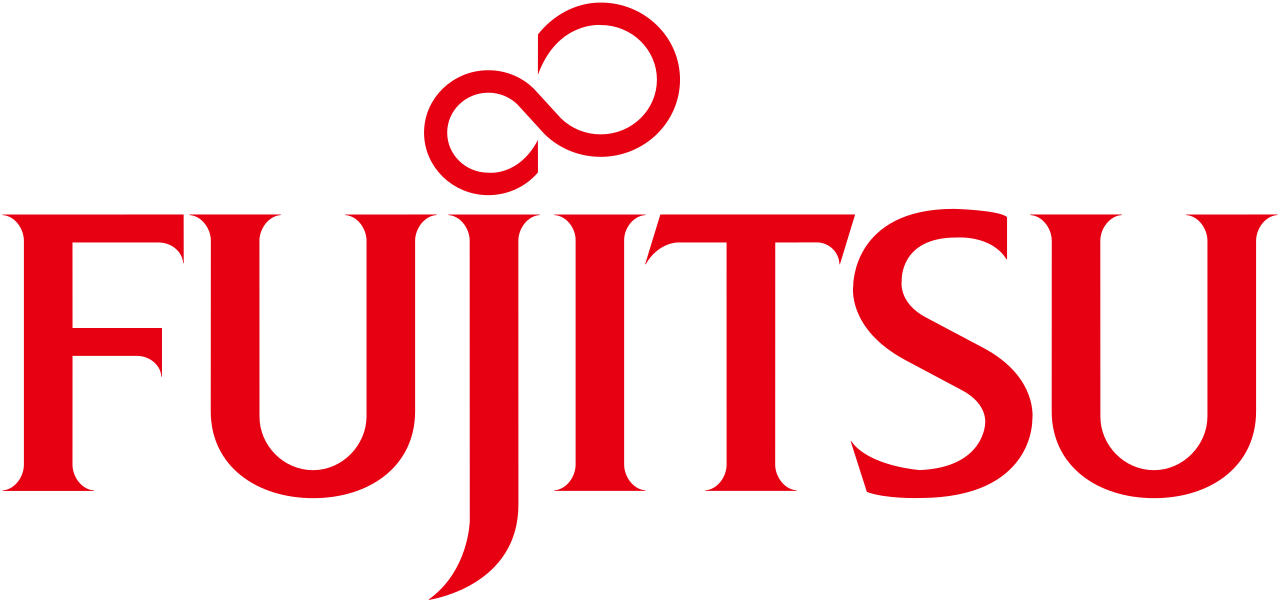


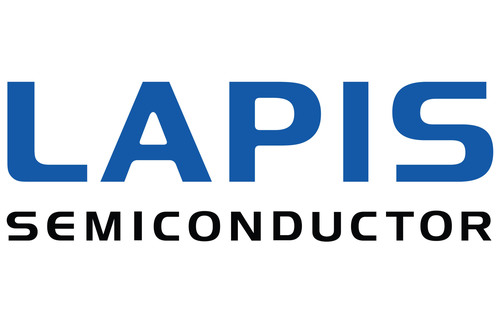



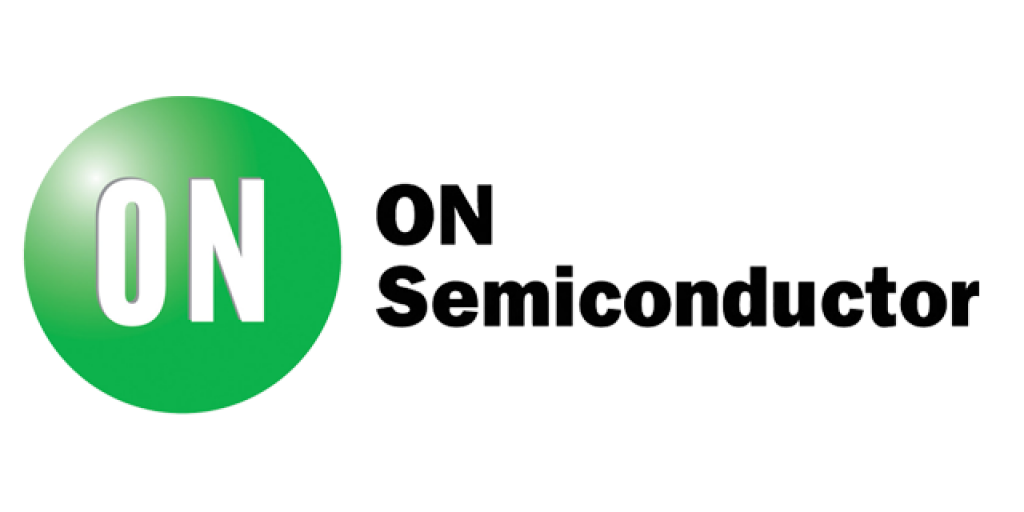


Purchase the study
Individual Purchase
- For 1 user
- PDF copy only
- 1 month post-sales service
- NA
- NA
Company License
- For 2 users
- PDF + Excel
- 1 month post-sales service
- 15% Off on ACES portal subscription
- 8 hours free customization
Enterprise License
- Unlimited Users
- PDF + Excel
- 1 month post-sales service
- 20% Off on ACES portal subscription
- 15 hours free customization
Do you have any specific need?
Let us know your specific requirements
Contact ussales@m14intelligence.com | Worldwide Sales: +1 323 522 4865
Or request a call back !
Related Products
Published : 09 Jun 2025
In-cabin and Exterior Sensing Applications of 4D imaging radar in ADAS and Autonomous Vehicles; 60 GHz, 76–81 GHz, and 140 GHz Band, SAE Level 2+ and ...
Published : 22 Apr 2025
Comprehensive Analysis of Service-Oriented Architecture (SOA), Over-the-Air (OTA) Updates, and Edge Computing in SDVs, Market Estimation and Forecasts...
Published : 28 Mar 2025
Lithium-ion (LFP and NMC) and Emerging Battery Technology (Solid-state and Sodium-ion) Market Sizing, Regional breakdown, Regulatory Policies, Battery...
Published : 05 Mar 2025
Driver Monitoring System (DMS) and Occupant Monitoring System (OMS) using Infrared (NIR), 3D sensing (VCSEL in ToF), Wide-angle Cameras, and Radar; in...
Published : 25 Nov 2024
Market Penetration & Sales Demand of Type of AMR - Inventory Transportation Robots, Picking Robots, Sortation Robots, And Drones for Inventory Managem...
Published : 04 Apr 2023
Autonomous Highway Trucks, Autonomous On-Road Vehicles, Sidewalk Robots/Droid, Market Penetration & Sales Demand, Consumer Analysis, Sensor Content (...
Published : 15 Mar 2023
Inventory Transportation Robots, Picking Robots, Sortation Robots, Collaborative Robots, And Drones; Market Penetration & Sales Demand; Market By Busi...
Published : 10 Aug 2021
In-cabin and Exterior Sensing Applications of 4D imaging radar in ADAS and Autonomous Vehicles; Emerging 4D imaging players competition assessment
Published : 02 Jun 2021
Future of AI powered autonomous precision farming using agriculture robots; RaaS vs equipment sales; driverless tractors; computer vision image recogn...
Published : 21 Apr 2021
Mobile Robots, Sensing, Mapping and Localization Technologies, and Warehouse Automation Solutions Market Analysis, Forecast, and Automation Industry A...
Published : 09 Apr 2021
Container Terminal Automated Equipment, Sensing Technologies, Automation Solutions, and Services Market Analysis and Forecast, Company Assessment, Ind...
Published : 06 Apr 2021
Analysis of 150+ LiDAR companies and total addressable market in the field on ADAS, AVs, Robotaxis, Shuttles, Pods, Construction & Mining, Ports & Con...
Published : 22 Feb 2021
Active Driver monitoring and Occupant Monitoring System using NIR camera and mmW Radar; in-cabin 3D sensing market for ADAS and autonomous vehicles; O...
Published : 14 Oct 2020
Estimated automotive-grade LiDAR mass production timelines, expected pricing at high-volumes, & preferred technology by the leading OEM-Tier1-LiDAR su...
Published : 14 Jul 2020
ADAS and AV development, testing, verification, and validation with Image, Video, Data Annotation, Ground Truth Labelling, Automation Software and Man...
Published : 03 Jun 2020
ADAS and autonomous vehicles enablers shipment, market size, and pricing forecast breakdown by levels of autonomy – camera, LiDAR, radar, V2X, HA GNSS...
Published : 13 Jan 2020
Autonomous vehicles launch timelines by OEMs & robotic vehicle companies (robotaxi, shuttles, pods, long-haul platooning trucks); market penetration &...
Published : 09 Dec 2019
3D sensing camera modules and subcomponents (VCSEL, CMOS image sensor, optics, 3D system design and computing) market penetration, size, shipment, and...
Published : 05 Dec 2019
Cybersecurity application demand and market penetration in connected autonomous vehicles (CAV), pricing/costing models and business models adopted by ...
Published : 03 Sep 2019
Expected mass production timelines of LiDAR for autonomous driving, target cost, LiDAR technologies analysis, LiDAR supplier’s competition assessment ...
Published : 10 Jul 2019
Penetration & Sales Demand (Level 1+2; Level 3 – Highway Autopilot & Long-haul Platooning; Level 4 – Highway Autopilot, Park Assist, Urban Autopilot –...
Published : 15 Sep 2018
Expected mass production timelines of LiDAR for autonomous driving, target cost, LiDAR technologies analysis, LiDAR supplier’s competition assessment ...
Published : 11 Jun 2018
Low & ultra-low power energy harvesting microcontrollers for wearables, medical devices, connected homes, precision agriculture, & smartphones. Blueto...
Published : 25 Jan 2018
Penetration & Sales Demand (Level 1+2; Level 3 – Highway Autopilot & Long-haul Platooning; Level 4 – Highway Autopilot, Park Assist, Urban Autopilot –...

.png)


